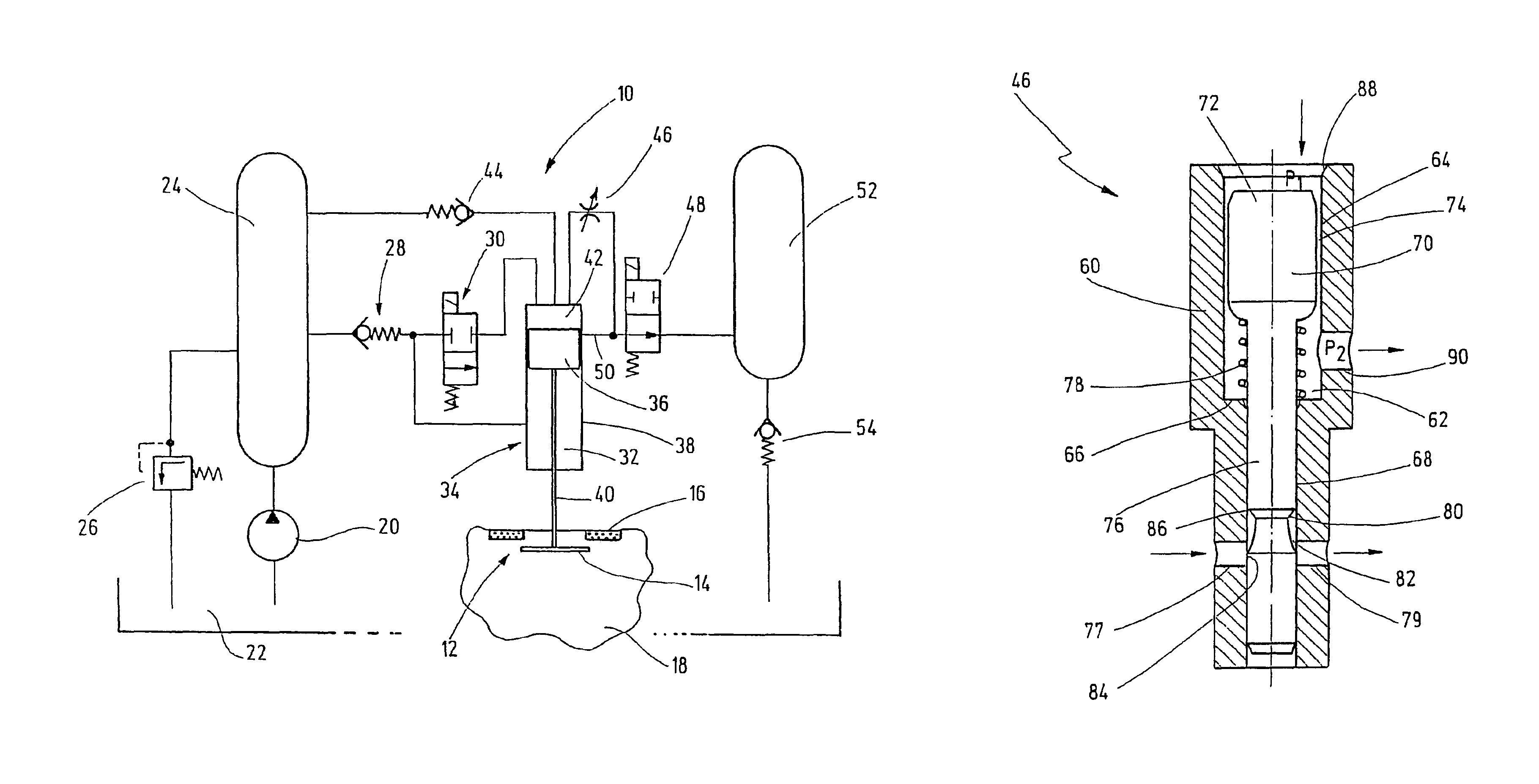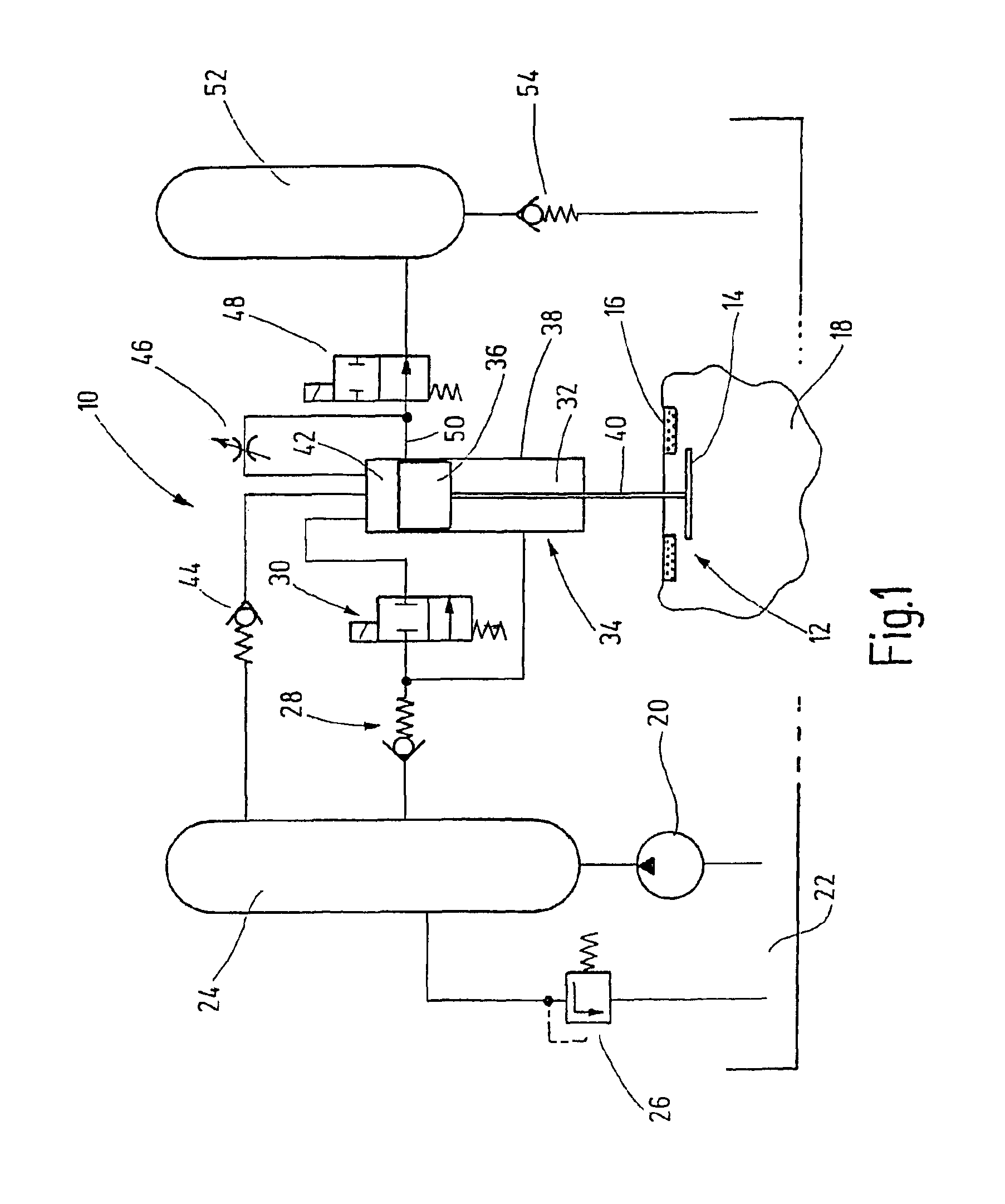Electrohydraulic valve controller
- Summary
- Abstract
- Description
- Claims
- Application Information
AI Technical Summary
Benefits of technology
Problems solved by technology
Method used
Image
Examples
Embodiment Construction
[0014]FIG. 1 shows a circuit diagram of an electrohydraulic valve controller 10 for controlling a gas exchange valve 12. The gas exchange valve 12 includes a valve body 14, with which a valve seat embodied as a valve seat ring 16 is associated. The valve seat ring 16 is disposed in a cylinder head 18, shown here only in suggested form, of an internal combustion engine. The structure and mode of operation of such gas exchange valves 12 are well known and therefore need not be addressed in detail in the context of the present description.
[0015]The valve controller 10 includes a hydraulic pumping device 20, by means of which a hydraulic medium—hereinafter called hydraulic oil—can be pumped out of an oil sump 22 into a high-pressure reservoir 24. The high-pressure reservoir 24 communicates with the oil sump 22 via a pressure limiting valve 26, so that a defined oil pressure can be built up in the high-pressure reservoir 24.
[0016]The high-pressure reservoir 24 moreover communicates via a...
PUM
 Login to View More
Login to View More Abstract
Description
Claims
Application Information
 Login to View More
Login to View More - R&D
- Intellectual Property
- Life Sciences
- Materials
- Tech Scout
- Unparalleled Data Quality
- Higher Quality Content
- 60% Fewer Hallucinations
Browse by: Latest US Patents, China's latest patents, Technical Efficacy Thesaurus, Application Domain, Technology Topic, Popular Technical Reports.
© 2025 PatSnap. All rights reserved.Legal|Privacy policy|Modern Slavery Act Transparency Statement|Sitemap|About US| Contact US: help@patsnap.com



